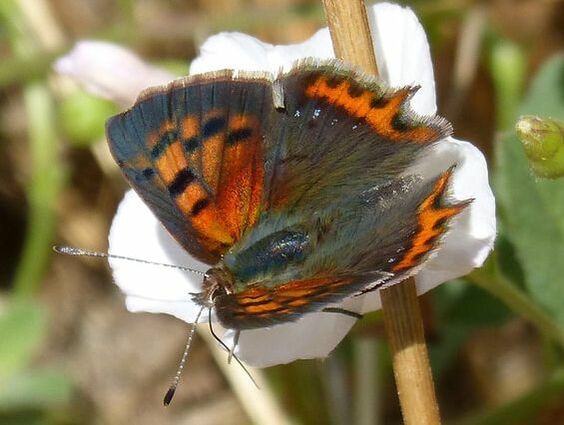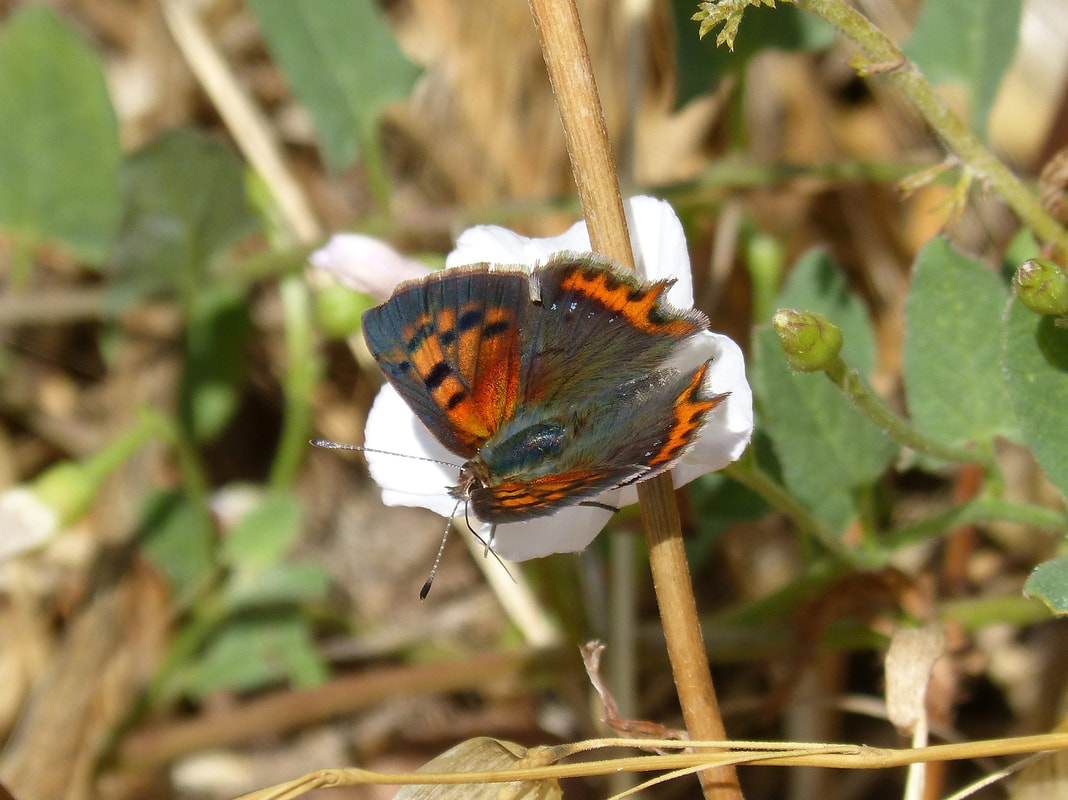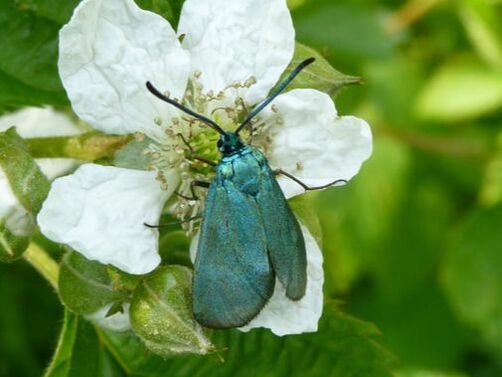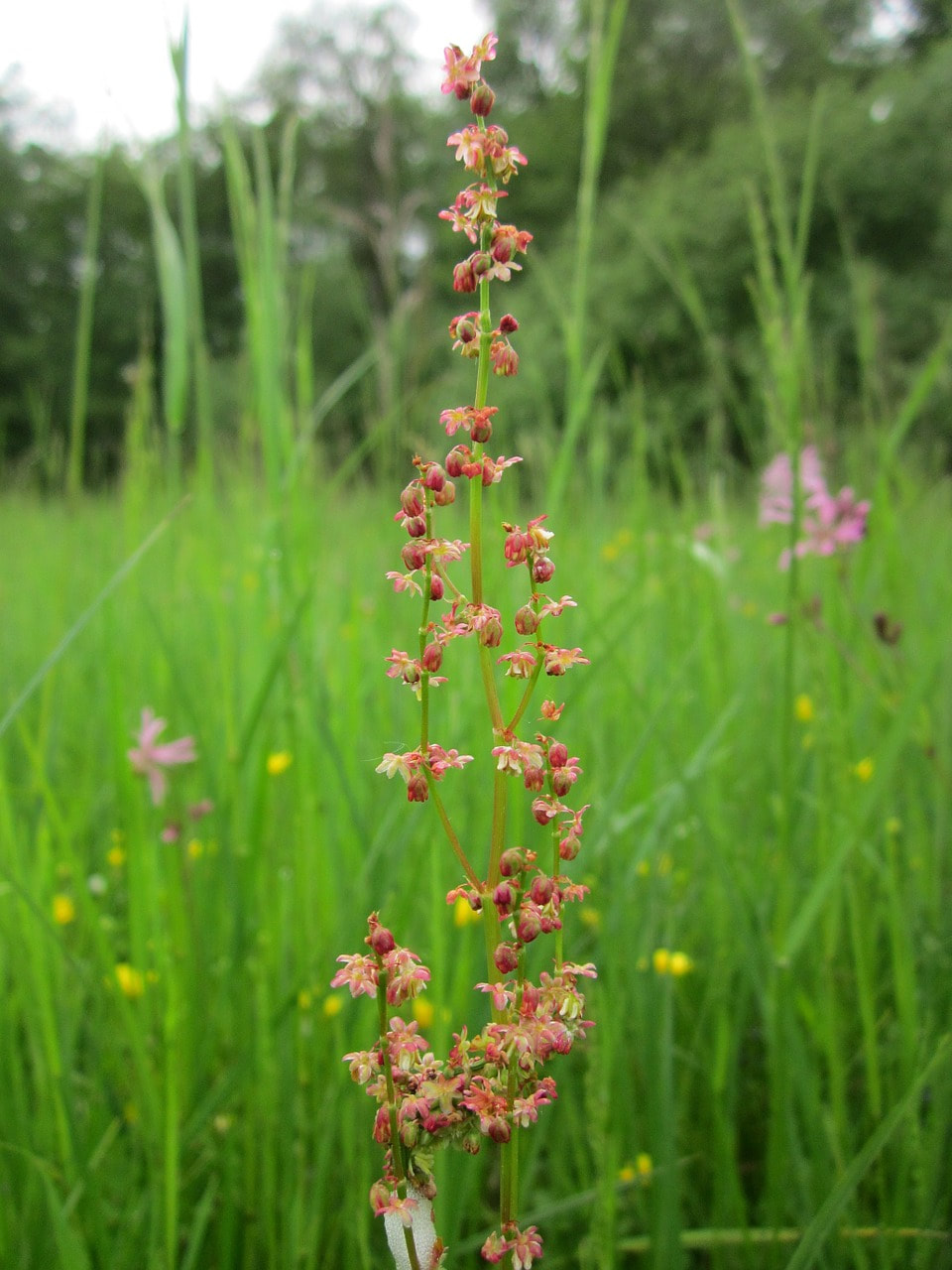Sheep's Sorrel
A favourite foodplant of caterpillars of the Small Copper Butterfly and Forester Moth
Sheep's Sorrel (Rumex acetocella) is rarely included in wildflower seed mixes as it's not a member of the pollinator club - being mainly wind pollinated it doesn't produce large pretty flowers and nectar to attract pollinating insects. Despite this, from the aesthetic point of view, its red stems and seed heads blowing in the wind make a welcome splash of colour in early spring.
As an added bonus the leaves are edible for us too, and are often included in supermarket salad mixes, having a sharp acidic taste, but don't eat too many - avoid stomach ache and leave some for the caterpillars. The caterpillars of the delightful Small Copper butterfly need them more than we do. They like their leaves fresh and juicy so plant them somewhere dampish where they wont dry out..
INCREASE BIODIVERSITY BY GROWING SHEEP'S SORREL TO SUPPORT THE SMALL COPPER BUTTERFLY AND COLOURFUL FORESTER MOTH
As an added bonus the leaves are edible for us too, and are often included in supermarket salad mixes, having a sharp acidic taste, but don't eat too many - avoid stomach ache and leave some for the caterpillars. The caterpillars of the delightful Small Copper butterfly need them more than we do. They like their leaves fresh and juicy so plant them somewhere dampish where they wont dry out..
INCREASE BIODIVERSITY BY GROWING SHEEP'S SORREL TO SUPPORT THE SMALL COPPER BUTTERFLY AND COLOURFUL FORESTER MOTH
SMALL COPPER
|
SMALL COPPER
|
FORESTER MOTH
|
Sheep's Sorrel
|



